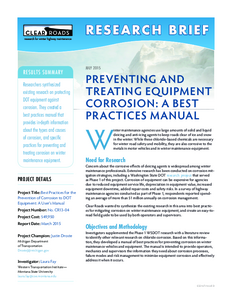Manual of Best Practices for the Prevention of Corrosion on Vehicles and Equipment used by Transportation Agencies for Snow and Ice Control
Date Created
2015-04
Report Number
CR13-04M
Description










